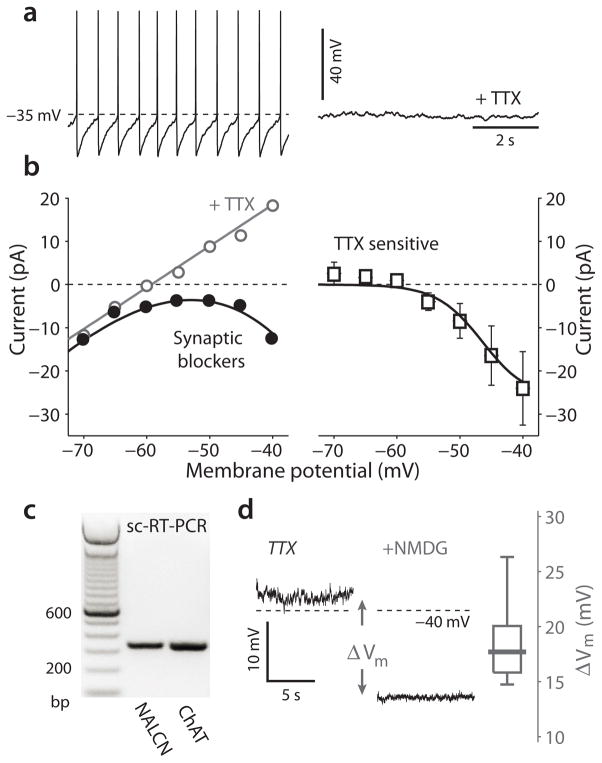Figure 2.
Role of sodium currents in the pacemaking of cholinergic DMV neurons. (a) a perforated patch recording from a cholinergic DMV neuron during pacemaking in the presence of a cocktail of synaptic blockers before and after application of 1 μM tetrodotoxin (TTX). (b) left: steady-state I-V curve of a DMV neuron before (black) and after (gray) TTX application. right: population average (mean ± sem) of the persistent TTX sensitive currents. Solid line: fit of a Boltzman sigmoidal curve for conductance multiplied by an electromotive force with a sodium Nernst potential of +70 mV, which is the predicted empirical potential. (c) single-cell reverse transcription PCR (sc-RT-PCR) reveals the presence of the NALCN channel mRNA in 6/10 of the cholinergic in DMV neurons. (d) recording of the TTX-induced stable resting potential before and after total sodium replacement with N-methyl-D-glucamine (NMDG) reveals a large hyperpolarization. The distribution of NMDG-induced hyperpolarizations (ΔVm) is shown on the right.

